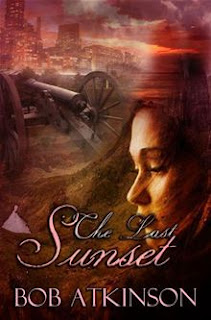*Click The Cover To Follow The Tour*
Book Feature
Nuclear Armageddon blasts through time itself, dragging people from different eras into a turning point in history.
The year… 1746.
Around Fort William, the Scottish Highlanders are in revolt and the Redcoats are coming…
But this time they will face more than flintlocks and Claymores.
Can history be changed, or is the future doomed to witness…
Genre – Time Travel Adventure / Romance
Rating – PG13
The Author's Guest Post
Culloden
by Bob Atkinson
On the 16th of April 1746 the last major battle was fought on British soil.
When the muskets and cannon of the British infantry had fallen silent, and the smoke had cleared, the grim task of dispatching the Jacobite wounded began.
‘Jacobites’ was the name given to followers of the exiled Stuart monarchy. Their commander in chief, Lord George Murray, had pleaded with Prince Charles Edward Stuart not to risk battle this day. Everything was against them. Outnumbered two to one; many of the clans had still not arrived on the battlefield. Those on the moor were dead on their feet following a failed night attack on the Government camp. Most hadn’t eaten for days. Even the weather had turned against them, the April sleet blowing hard into weary faces.
But worst of all was the ground that Prince Charles had chosen to make his stand against his Hanoverian cousin, the Duke of Cumberland. The terrain was flat and boggy, ideal for defensive artillery and musket fire, but utterly unsuited to the wild Highland charge. Charles had manoeuvred his exhausted army into a Hanoverian firing range.
The battle opened with the bellow of government cannon. Swords and shields were beaten together in impotent rage as iron shot cut bloody swathes through the Highland ranks. They endured perhaps twenty minutes of this, their Prince frozen in indecision, before Clan Chattan finally broke forward into a desperate charge. They were immediately followed by the Camerons, Appin Stewarts and Atholl Brigade to their right, and by the Chisholms, Macleans and ultimately the Macdonalds on the left.
The government cannon immediately changed to grapeshot; jagged pieces of metal that swept through the charging men like shrapnel. This was followed by volley after volley of musket fire.
The moor began to fill with dead and dying clansmen, those in the rear climbing over their own kinsmen to get at the enemy.
On the Jacobite right the Camerons and Stewarts somehow reached the Hanoverian lines. The artillerymen, their guns positioned in the gaps between the infantry regiments, were chopped down by enraged clansmen. To the rattle of musket fire was now added the iron clang of sword on musket barrel. Within a few minutes two of the British regiments on that wing were severely mauled and pushed back onto their second line.
This day, however, the British lines held. Their numbers severely depleted, those clansmen who had survived the charge could make little headway against the muskets and bayonets of the Hanoverian infantry.
All along the line the Highland tide was ebbing back; the surviving clansmen desperately trying to avoid encirclement by government dragoons.
The field between the two armies writhed with the injured and the dying. Already government soldiers were bayoneting and clubbing any clansman showing signs of life.
The slaughter would continue for days.
The government army had fought bravely and well. They had overcome the dreaded Highland charge. Yet one British general would later remark that never had the British army so disgraced itself as during those days following Culloden.
The graves of the Highlanders can be seen to this day, marked by the names of their clans.


No comments:
Post a Comment
I love to read what you have to write and I like to write back, so feel free to comment :)